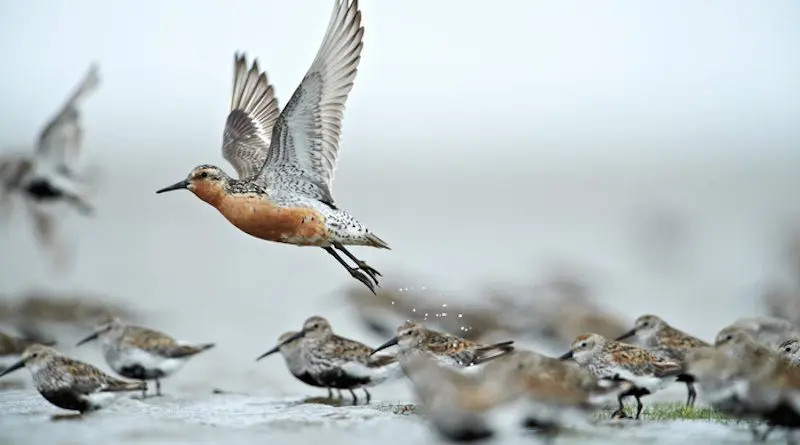Photo Posts Reveal Huge Interest For Real Coastal Nature
Tourists are generating more social media attention about marine protected areas than about neighboring coastal areas. In those protected areas, they focus more on nature as such, wildlife or wild landscapes. In contrast, photos from nearby ‘control’ coastal zones focus more on human infrastructures like roads, trains, restaurants, and cultural and historical sites.
The new research is based on the study of more than 120 million photos posted on social media by people visiting different marine destinations worldwide.
The photographers also described their photos taken in marine protected areas more positively than those taken outside marine protected areas (MPA’s). The social media followers viewing pictures of those experiences liked and commented more on MPA photos than non-MPA photos.
The study points out that marine protected areas create more cultural ecosystem services (CES) than adjacent coastal areas. CES means all the intangible services we receive when interacting with nature – the natural experiences’ mental and physical health benefits.
“So far, we did not have a measure of this because CES is hard to estimate. Now we know that counting the photos and looking at their content can reveal a lot. We learn where and when people interact with nature and what they focus on,” says Prof. David Lusseau from DTU Aqua.
He led the research study Marine Protected Areas provide more cultural ecosystem services than other adjacent coastal areas.
“We as a society tend to shoot in the dark when planning for cultural ecosystem services. We know that experiences with nature can do people good. However, we are still very vague about what and where those CES are more likely to occur. We are, in fact, poor at identifying and valuing CES,” he says, and continues:
“For example, one crucial question we are unable to answer at the moment is how much health benefits a neighborhood gains from having a simple park? How many days in hospitals, doctor’s visits, mental health deterioration are avoided by regular visits in nature like marine protected areas? But now, the social media sampling approaches to capture CES are getting us closer to being able to capture this,” says Dr. David Lusseau.
Cultural Ecosystem Services in Denmark
MPAs are often advocated to provide more cultural ecosystem services. Local communities can build new economic opportunities to replace the activities displaced by these biodiversity conservation interventions.
“Importantly, we show for the first time at a global scale that the average MPA do provide more CES, and we list the species and landscapes on which people focus at MPA sites. This has immediate applications in helping MPA managers worldwide account for these benefits and find ways for communities to exploit them sustainably. The same goes for communities considering MPA designation,” says prof. David Lusseau.
The study looks at all marine protected areas in the world—12,000+ zones, including Danish ones. Suppose you want to enjoy CES from a marine protected area in Denmark. In that case, you can go to the Wadden Sea National Park in the southwest of Denmark.
Marine protected areas have different reasons to be protected and various ways by which they are protected. There are regional, national, and international regulations and legislations driving the establishment of MPAs.
“The Wadden Sea National Park raises a good point about MPAs: All sorts of areas are classified as marine protected areas. A positive way to see this is that there are plenty of regulatory opportunities to establish protected areas at sea,” says David Lusseau and elaborates on the issue of diversity:
“A more cautious way to look at it is that it is a right mess. MPA’s can be anything from ‘paper reserves’ – ‘lines’ on the water where nothing happens – to zones where human activities are fully excluded. A national park designation is one of the more robust ways to designate an MPA. Internationally, we have a consensus drive to push for more MPA’s to be established. Here we show that all MPA’s, regardless of designation, have a net benefit on average. We just need to help communities living with MPA’s find ways to make the most of those CES sustainably.”
The secondary exposure
Marine biodiversity loss is a global threat to the integrity of ecosystem services. The marine protected areas are advocated as a critical tool to manage the restoration and sustainable use of the oceans. They now cover 8% of global oceans.”
“In the policy arena, for all nations, and for inter-governmental organisations, our study and the body of work on which it builds provides a new avenue to value nature more comprehensively. It shows us that we can understand human-nature interactions from social media posts,” says David Lusseau.
Even the pictures of nature in protected areas themselves are believed to create value:
“The movement of people is restricted because of the pandemic, and they spend more time online. But it seems that posting content about MPA natural assets can be a way for people to enjoy it and value it from a distance. This is what we called “secondary exposure” to nature – viewing the experience of others interacting with nature online.”
“We propose that social media platforms could play a crucial ‘marketplace’ role for public and private community initiatives to build derivatives from MPA nature assets. This could have health and personal benefits for those able to enjoy that secondary exposure online. This would help “nature-rich communities” connect with distant ‘markets,’ and not relying solely on people visiting those places,” says David Lusseau, and makes a final point:
“Finding ways to derive incomes also from secondary exposure to nature for nature-rich communities would directly address one of the key objectives of the European Green Deal, to decouple economic growth from natural resource exploitation.”

